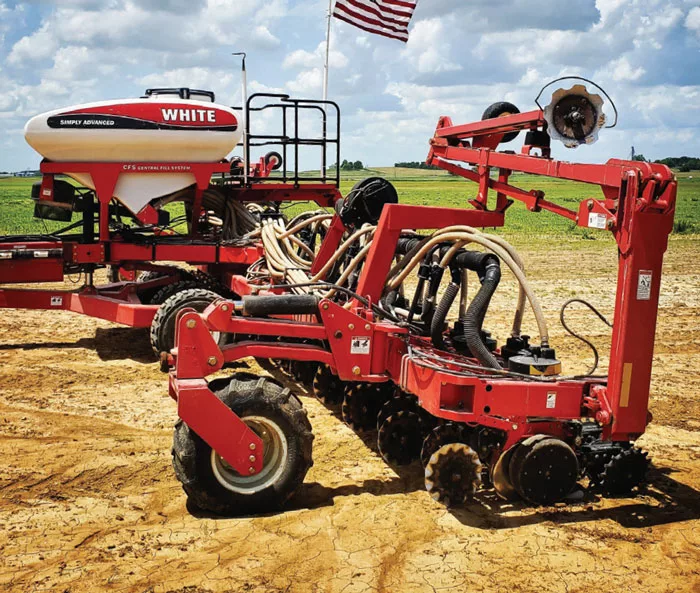Evansville, Ind., strip-tiller Ben Kron has been farming for 32 years — “33 years if you count when my mom was pregnant with me,” he jokes. But the second-generation farmer isn’t joking around when it comes to achieving high yields.
Kron won the National Corn Growers Association 2021 National Corn Yield Contest’s strip-till, minimum-till, mulch-till, ridge-till irrigated class in Indiana with nearly 391 bushels per acre. He also broke the state’s strip-till, irrigated corn yield record that same year.
“Strip-till is the key to the whole thing,” Kron says. “From the moment the plant comes out of the ground, through the entirety of its life, it has fertilizer right there underneath it.”
Kron made the switch to strip-till 4 years ago after thorough research and discussion with other farmers in his inner circle.
“It just seemed to really make sense for us,” he says. “Placing what we need right under the plant — if we can use the same amount of fertilizer or less and become more efficient, why wouldn’t we do it? It’s been a major money-saver considering how high fertilizer prices have been.
“It was a seamless transition for the most part. I had concerns at first about being able to keep the planter on top of the strips. But my first year strip-tilling, the planter felt those spots and stayed dead center. I was like, ‘Wow this is going to work a lot better than I thought.’”
Maximizing Planter Performance
All the fertilizer in the world won’t matter if your planter isn’t in shape, Kron says.
“If your equipment isn’t set up and maintained properly, then you’re not going to get where you want to go in terms of reaching your high-yield goals,” he says.
Kron dedicates a good chunk of his time in the fall and winter to equipment maintenance and testing his 16-row White 9831 planter to make sure it’s ready for its best pass in the spring.
“Every other year we’ll take 4x4s and set them underneath the gauge wheels on the planter,” Kron says. “We’ll take a ruler, set the planter down on the 4x4s across all rows and make sure they’re adjusted to plant at the same depth. Even with new planters, you would be surprised how often there is a half inch or more difference across it from the depth adjustment not being set right.”
He meticulously checks seed meter plates and opening discs for warping, inspects fertilizer tanks and pumps for leaks, and pays close attention to planter chains.
“If you have chains on your planter, make sure to inspect them,” Kron says. “You’d be surprised how a little bit of roughness on your chains can make the planter go completely erratic.”
Embracing Change
Kron takes the same detail-oriented approach to nutrient management. He’s not afraid to call an audible if something seems off. Even after a record-breaking season, he’s implementing major changes to his fertilizer plan.
“We’ve completely gone away from potash and are now using potassium sulfate,” Kron says. “We just completed a 3-year trial spreading as much potash as we can. The numbers weren’t moving like I thought they should. Slow release is the favorite phrase in the industry. Well, I guess if it never releases then it is a pretty slow release. We’ll see how the switch to potassium sulfate goes. I’m hoping next year we can talk again, and I’ll tell you that it worked.”
Kron is also thinking about building some strips in the fall next year. He traditionally builds strips in the spring with his friend’s LandLuvr strip-till bar but has run into trouble on his heavier soils.
“It’s hard to get strips down in the spring and closed up in time on some of our heavier grounds,” Kron says. “We’d like to try strips in the fall on some of that ground, and maybe some different fertilizers that would overwinter better than other ones.”
Kron doesn’t hesitate to roam outside his comfort zone, and he encourages other strip-tillers to do the same.
“It doesn’t hurt to try something you haven’t done before,” Kron says. “If you’ve been running the same fertilizer mix for 10 years, try throwing something different in there and see if it works.”







